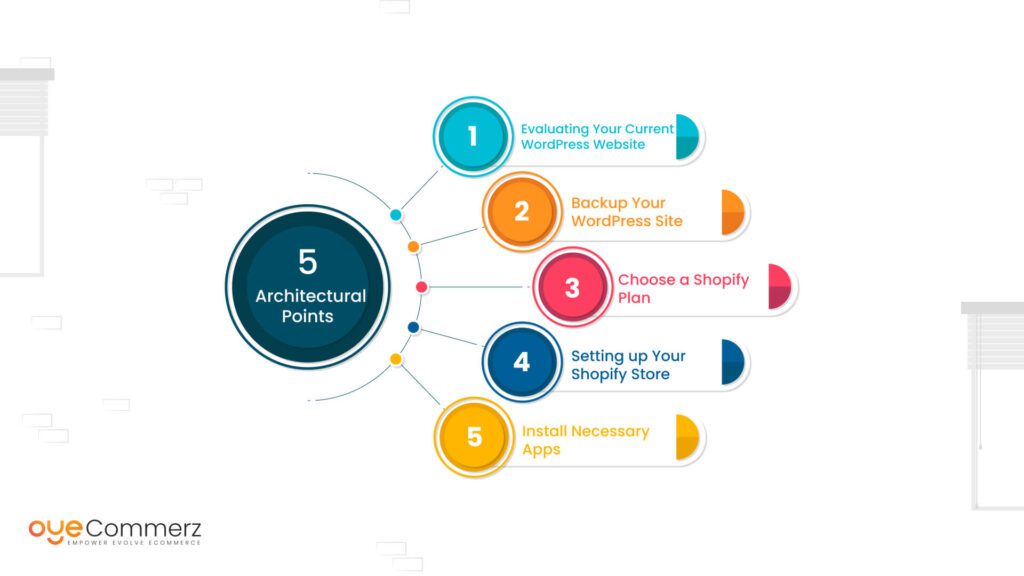Shifting from WP to Shopify is an promising step toward streamlining your online store operations. As companies grow, selecting a solution that aligns with scalability, UX, and customization is essential. Shopify has emerged as a preferred choice for e-commerce professionals, offering superior flexibility, data protection, and ease of use. In this guide, we will delve into the transformative impact of this migration, discuss the advantages, and provide practical tips to ensure a seamless move.
1. Why Migrate from WP to Shopify?
The combination of WordPress and WooCommerce, has served countless e-commerce platforms. However, as companies scale, challenges like reliance on plugins, security vulnerabilities, and complex setups can hinder progress. Shopify, specifically created for digital retail, eliminates these issues with an comprehensive, user-friendly platform. Real data back this shift—Shopify hosts over 4.4 million stores worldwide, with a documented 10% boost to sales performance for numerous merchants post-switch.
2. Shopify's Advantages for Thriving Online Stores
Shopify’s robust ecosystem is tailored for scaling businesses. Its notable benefits include:
- Seamless Customization: Shopify provides over 80 expertly crafted themes.
- Integrated Tools: Features like Shopify Payments and built-in SEO streamline operations.
- International Expansion: Currency versatility and localization features enable brands to expand internationally.
Additionally, Shopify boasts an availability percentage of 99.98%, guaranteeing your store is always operational.
3. Getting Ready for Your WP-to-Shopify Transition
Before migrating, evaluate your existing setup. Review inventory details, customer details, and search engine rankings. Tools like Shopify’s Migration Kit or third-party solutions help ease the transition. Create a comprehensive plan, making sure all assets—product descriptions, media files, and articles—are ready for seamless import.
4. The Importance of Accurate Data Migration
Data migration forms the foundation for a successful transition. When migrating from WP to Shopify, prioritize:
- Product Information: SKU, descriptions, and groupings.
- Customer Data: Emails, purchase records, and preferences.
- Search Engine Considerations: Preserve meta tags, URLs, and forwarding paths to maintain search rankings.
Use tools such as LitExtension to streamline data transfer while reducing mistakes.
5. Tailoring Your Shopify Store to Fit Your Brand
After the move, WooCommerce alternative Shopify customizing your Shopify store helps it aligns with your business identity. Utilize Shopify’s intuitive page builder to design pages effortlessly. Shopify's themes are optimized for all devices, ensuring a seamless user experience across devices—a key point, given 74% of online shopping is generated by mobile users.
6. How to Protect Your SEO Rankings When Switching Platforms
SEO is vital for maintaining your online presence during migration. Shopify excels in SEO with organized link formatting, built-in optimization tools, and seamless blog integration. Make sure you:
- Implement 301 redirects for old URLs.
- Enhance updated content with targeted phrases.
- Use Shopify's apps Plug in SEO to track analytics after the switch.
7. Post-Migration Testing
Once the migration is complete, conduct thorough testing.
Review: - Website speed (Shopify delivers faster speeds in contrast with WordPress).
- Functionality of payment gateways and checkout processes.
- Mobile responsiveness.
Testing guarantees your store provides a smooth shopping experience from the start.
8. Real-Life Success Story
An example of effective platform switching is Gymshark, a fitness apparel brand that moved to Shopify. After the switch, the company experienced a 60% increase in mobile sales and reduced site downtime. This highlights the capabilities of Shopify in driving online business success.
9. Challenges and Solutions
Migration comes with challenges, such as data integrity and reconfiguring custom functionalities. However, Shopify’s extensive assistance and third-party experts simplify the process. Collaborating E-commerce platform migration with experienced Shopify developers helps guarantee a trouble-free transition.
10. Making the Switch: The First Step Toward Success
Switching from WP to Shopify represents a forward-thinking decision to online retail. By focusing on growth, simplifying management, and enhancing the customer experience, Shopify enables companies to thrive in competitive markets.
Final Thoughts
Transitioning from WordPress to Shopify is a strategic move that can significantly boost your online business performance. With a well-structured strategy, the right tools, and expert support, you can unlock new success milestones.
Excited to start the journey? Let’s discuss how our Shopify migration services can transform your e-commerce platform. Contact us now, or consider: Is it time to seize Shopify’s advantages for your store?
